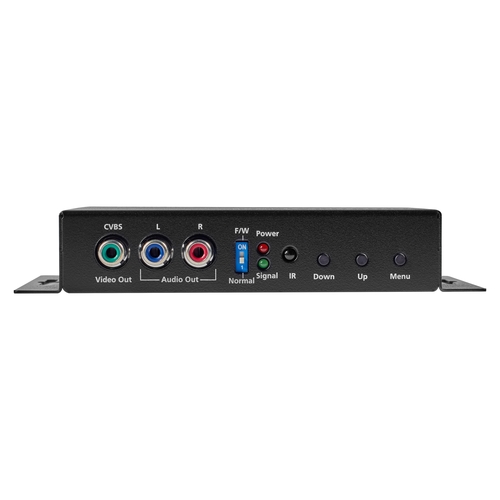

They are capable of outputting continuous information with a theoretically infinite number of possible values. Bottom Line: Analog vs Digital SignalsĪnalog signals represent one continuous variable as the result of another continuous time-based variable. It is worth noting, however, that in audio recording, both analog and digital are currently in regular use, each with its own supporters. In 2019, all new consumer TVs are digital, just as all consumer computers have been for many years.
#DIGITAL TO ANALOG VS ANALOG TO DIGITAL VIDEO CONVERTER TV#
One recent example is the ubiquity of digital TV broadcast or HDMI video standards. In nearly all cases, digital versions have supplanted their analog counterparts. They used various physical phenomena (such as electrical or mechanical quantities) to model the problems to be solved. These early computing devices were used to calculate complex scientific and industrial problems prior to the development of sufficiently powerful digital computers. Television broadcast signals (until recently)Īt one point in time, analog computers were even available.

Older video signal transmission technologies (VGA, S-Video, etc.) We use analog signals in a wide variety of applications, such as: But for our purposes, we use it most commonly to describe electrical signals. In theory, we can use the term “analog signal” to describe any continuous signal that uses one time-variable quantity to represent another (such as mechanical systems like a dial thermometer).

The output by the bulb is analogous to the time-dependent variable “position of the dimmer switch.” Difference Between Analog and Digital Signalĭigital signals, by contrast, express variation in the system’s variable in response to a set of discrete values (more like a light with an “on/off” switch or a three-way bulb with multiple, discrete levels of output). In a perfect analog system, the dimmer will have an infinite number of positions between “off” and “full” – and a correspondingly infinite number of levels of output by the lightbulb. The result is that analog systems allow for a theoretically infinite number of values to be represented: it can achieve any value within the parameters governing the system.Īs an example, imagine a dimmer switch tied to a light bulb. In other words, one variable is an analog of the other. At its base, an analog signal is a continuous signal in which one time-varying quantity (such as voltage, pressure, etc.) represents another time-based variable.


 0 kommentar(er)
0 kommentar(er)
